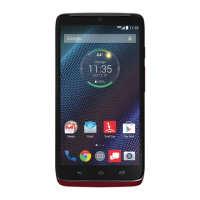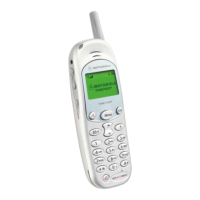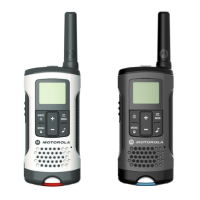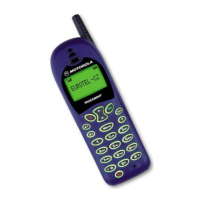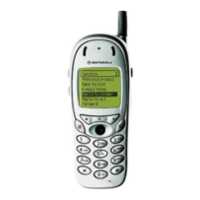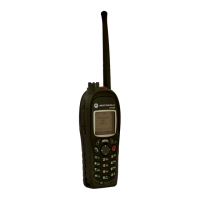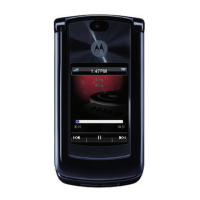
Do you have a question about the Motorola Tundra VA76r and is the answer not in the manual?
| Network Technology | GSM / HSPA |
|---|---|
| 2G bands | GSM 850 / 900 / 1800 / 1900 |
| GPRS | Class 12 |
| EDGE | Class 12 |
| Status | Discontinued |
| SIM | Mini-SIM |
| Type | TFT, 65K colors |
| Memory Card slot | microSD, up to 8 GB |
| Call records | Yes |
| Camera | 2 MP |
| Video | Yes |
| Alert types | Vibration; Downloadable polyphonic, MP3 ringtones |
| Loudspeaker | Yes |
| 3.5mm jack | No |
| WLAN | No |
| Bluetooth | 2.0, A2DP |
| Radio | No |
| Messaging | SMS, MMS, Email |
| Browser | WAP 2.0/xHTML |
| Games | Yes |
| Java | Yes, MIDP 2.0 |
| Announced | 2009 |
| Size | 2.2 inches |
| Resolution | 240 x 320 pixels |
| Phonebook | Yes |
| GPS | Yes |
| USB | miniUSB 2.0 |
| Battery | Removable Li-Ion |
| Colors | Black |
| Other Features | Push-to-Talk (PTT) |
| 3G bands | HSDPA 850 / 1900 |
Explains how to locate features and understand symbols used in the manual.
Information about the Universal Subscriber Identity Module card and its handling.
Details on storing files on an optional microSD memory card.
Information on proper battery handling, safety, and charging.
Step-by-step instructions for installing the phone's battery.
Guide on how to charge the phone's battery using the charger.
Instructions for powering the phone on and off.
Steps to initiate a phone call by dialing a number.
How to respond to incoming calls by opening the flip or pressing a key.
Instructions for hanging up a phone call.
How to save contacts, including name and number, in the address book.
Steps to make a call to a contact saved in the address book.
How to find contacts by entering letters of their name.
Using the Push to Talk feature for walkie-talkie communication.
Explains the home screen layout, status indicators, and dialing from the home screen.
How to adjust earpiece, speakerphone, and ringtone volumes.
Functionality and usage of the top select key for navigation.
Information shown on the phone's external screen when closed.
Using voice commands to operate phone functions.
How to make calls using voice commands for contacts or numbers.
How to turn the speakerphone on or off during a call.
Managing unlock codes, security codes, and PINs.
Securing the phone with a code to prevent unauthorized use.
Customizing alert styles, ringtones, and volumes for different situations.
Personalizing the phone's look and sound using themes.
Setting a custom image as the phone's background wallpaper.
Configuring the phone's screensaver and its display timeout.
Customizing navigation keys for quick access to favorite features.
Changing the visual appearance of the main menu.
Setting and synchronizing the phone's time and date.
Silencing the ringer before answering an incoming call.
Viewing lists of incoming, outgoing, and missed calls.
How to redial the last called number.
Making a call back from a missed call notification.
Information about the calling party's identification displayed on screen.
How to make emergency calls to designated numbers.
Safety advice for using the phone handsfree while driving.
Configuring how incoming calls are answered (e.g., any key, open flip).
Tracking network connection time for calls made and received.
Setting up phone numbers for quick dialing using speed dial keys.
Managing multiple calls simultaneously, switching between them.
Setting up or canceling call forwarding to another number.
Switching between word, abc, numeric, and symbol text input modes.
Adjusting text case for input (e.g., all caps, sentence case).
Enabling the phone to learn user-entered words for better prediction.
Using predictive text entry for faster word input.
Standard text entry mode for typing letters and characters.
Entering numbers using the phone's keypad.
Accessing special characters and symbols via the keypad.
Checking and managing voice messages received on the phone.
Sending and receiving text messages, including media attachments.
Composing and sending text or media messages to recipients.
How to read incoming messages and handle media objects.
Accessing and managing email accounts on the mobile device.
Using instant messaging services and managing contacts.
Overview of music services, features, and accessing AT&T Music.
Steps to copy music files from a computer to the phone.
How to play music files using the phone's music player.
Listening to digital radio channels via XM Radio.
Accessing and viewing music videos through the phone's browser.
Instructions for capturing still images using the camera.
How to view stored pictures taken with the camera.
Automatically sending photos to contacts after capture.
Customizing camera options like resolution, timer, and quality.
Connecting to other devices wirelessly via Bluetooth.
Managing the Bluetooth feature's power state for battery life and security.
Transferring files like media, contacts, or bookmarks using Bluetooth.
Connecting the phone to a computer or printer using a USB cable.
Managing files stored on the phone or memory card.
Information on updating the phone's software over the air.
Information on the phone's compliance with RF exposure guidelines.
General advice for safe and efficient phone operation.
Guidelines for holding and wearing the device for optimal performance.
Information on potential interference with other electronic devices.
Precautions for users with pacemakers or defibrillators.
Safety advice for using the phone while driving.
Warnings for using the phone in hazardous environments.
Warnings regarding flashing lights and potential health effects.
Risks associated with listening to loud audio and protecting hearing.
Details on what is included in the product warranty for phones, accessories, and software.
Items and conditions not covered by the limited warranty.
Guidelines for safe mobile phone use while operating a vehicle.
